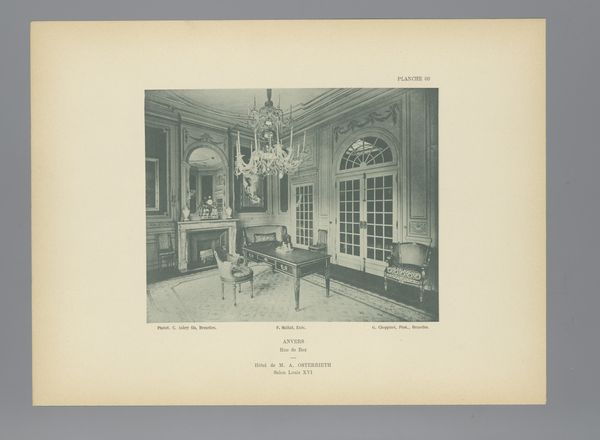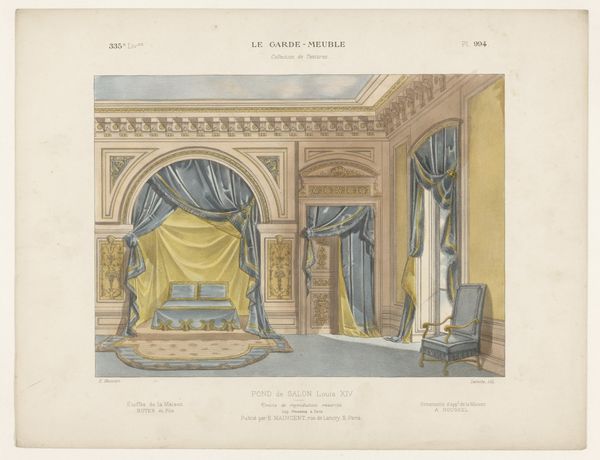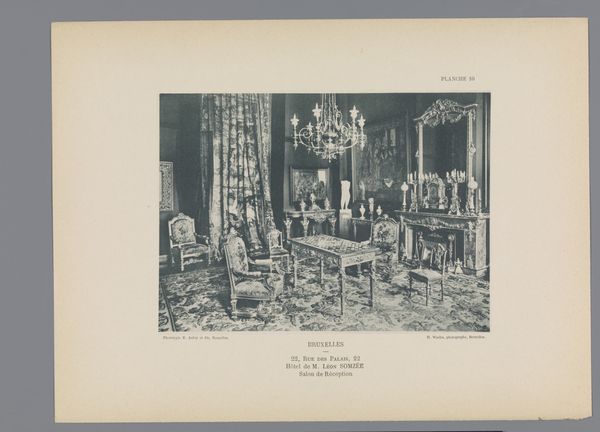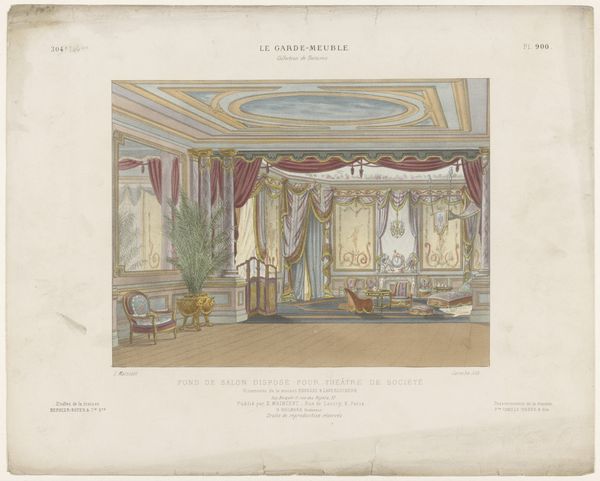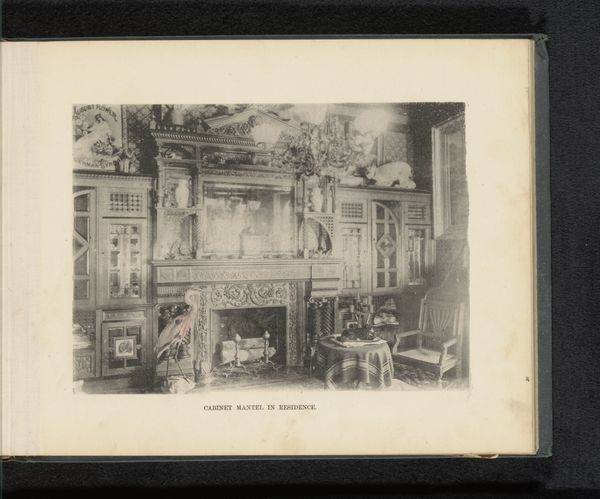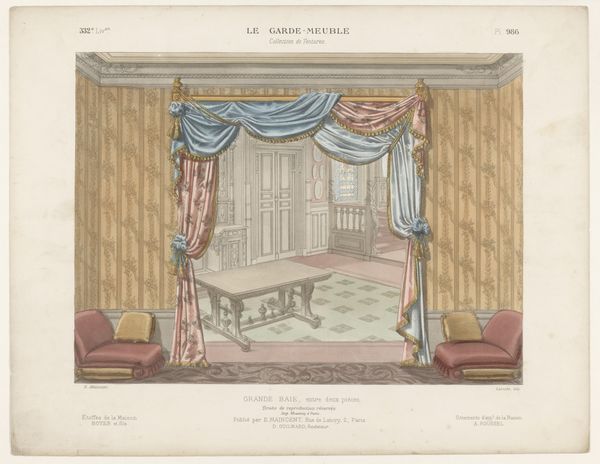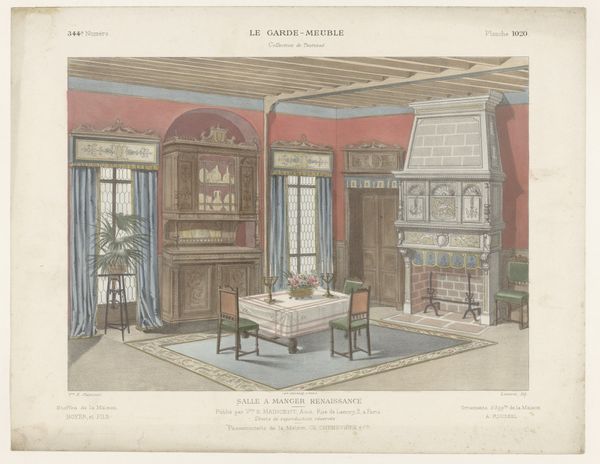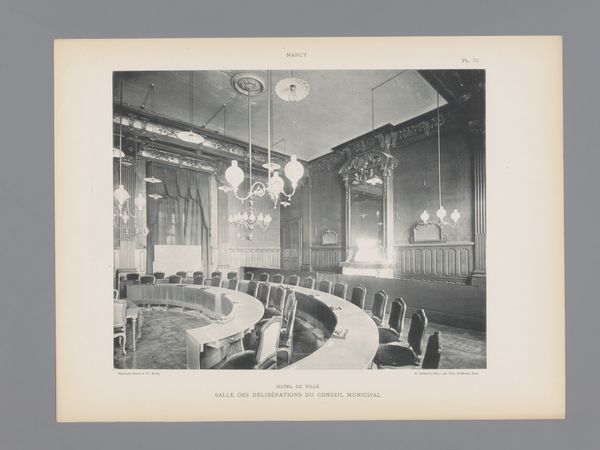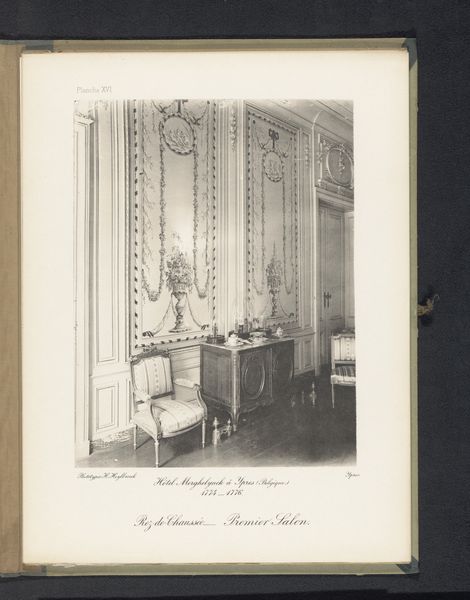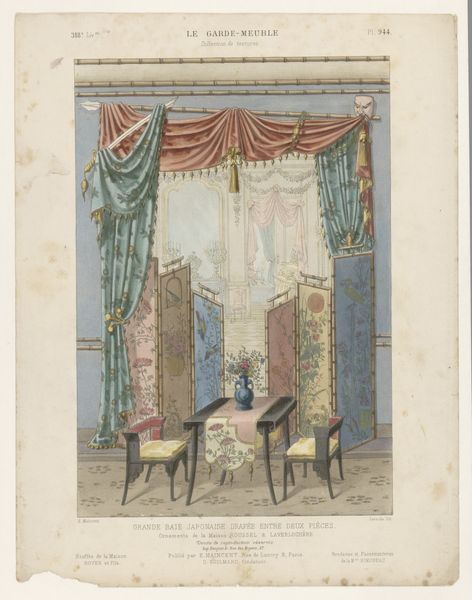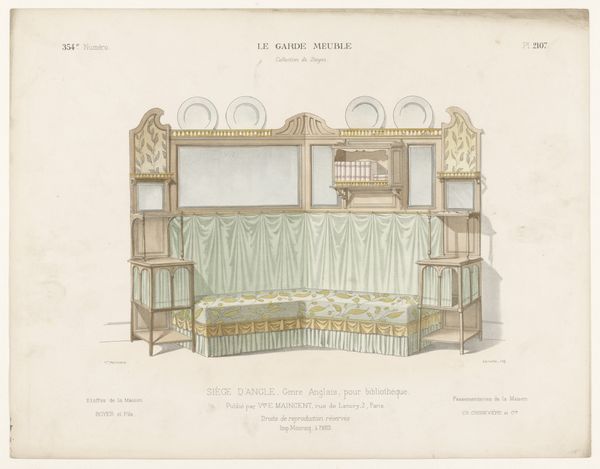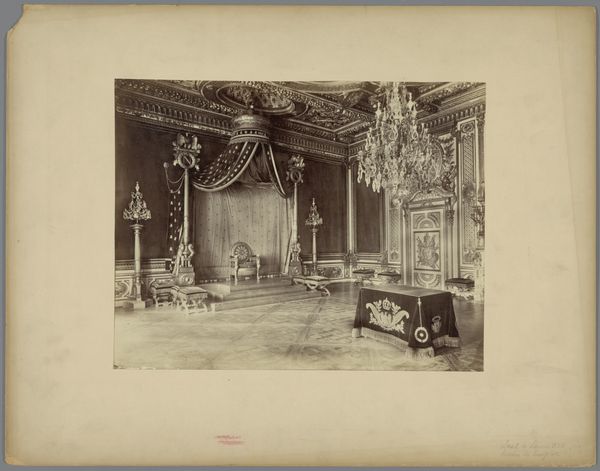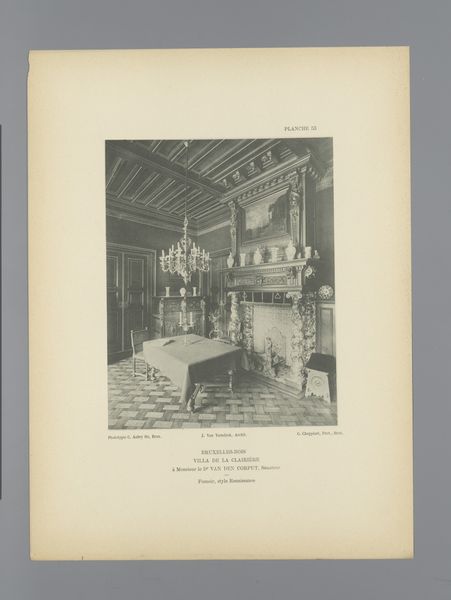
print, photography, collotype
#
still-life-photography
#
art-nouveau
# print
#
photography
#
collotype
#
orientalism
#
genre-painting
#
decorative-art
Dimensions: height 357 mm, width 276 mm
Copyright: Rijks Museum: Open Domain
Curator: What a striking array of forms and textures. My initial impression is a stage set—a theater of emptiness where absence speaks louder than presence. Editor: Indeed. This collotype, dating from 1889 to 1895, showcases an ensemble of chairs, armchairs, and a settee designed for "Le Garde-Meuble," a Parisian furniture house. It reflects the stylistic confluence of Art Nouveau and a subtle hint of Orientalism, indicative of its time. Curator: The positioning is fascinating; the missing upholstery lends an incomplete aura, begging for narratives. How do these forms reflect, or perhaps subvert, bourgeois expectations of comfort and luxury? I'm keen to explore how this image can illuminate the social performance embedded within the domestic space of that era. Editor: Well, formalism reveals a deliberate arrangement and play of lines and light, wouldn’t you agree? The ornate frames offer dynamic and contrasting shapes in themselves. The starkness might suggest an underlying critique of consumerism or perhaps the ephemerality of fashion? Curator: Possibly, but it seems difficult to dismiss the question of accessibility when considering images like this. How might we consider the exclusion of certain classes from this aesthetic sphere? The lavishness of design—juxtaposed to what feels like bare presentation of objects, in waiting—is something that deserves our attention. It reminds us that the rise of such art often relies on exploitative labour conditions and unequal trade relations. Editor: It also points us towards innovative technical skills involved with collotype— the unique tonal range. Perhaps one way to respond to your proposition might be by analysing the semiotics of photographic reproductions. After all, it captures a material reality that painting could not convey with the same apparent truthfulness, regardless of access. Curator: I appreciate that reading! Reflecting on it, my thoughts align closer with those times, marked with rapid industrialisation. Perhaps this represents both a display of elite comfort but it’s also about their anxiety concerning progress. Editor: Quite! Each chair then, we might see as less individual items. Instead we look at the display: it captures the cultural dynamism in 19th century Paris, where craftsmanship and mass-production converge!
Comments
No comments
Be the first to comment and join the conversation on the ultimate creative platform.
